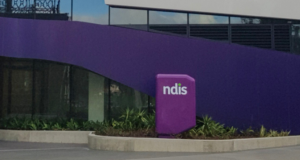Unlocking the World of Braille
According to the 2016 Census, approximately 357,000 people in Australia had vision impairment or blindness, but that number could be significantly higher, with some estimates putting the number at 600,000 or more. For many Australians with low vision, Braille is an important method of communication. But what exactly is it?
Braille is a system of raised dots that can be felt with the fingertips, allowing people who are blind or visually impaired to read and write.
As the pre-eminent system of touch reading for people who are blind or have low vision, braille is an essential tool for literacy. It gives people direct access to the written word and plays a vital role in many aspects of life, whether to label items, publish a novel or convey complex mathematical equations.
Here are some interesting Braille facts that you may not know:
- Braille was invented by Louis Braille, a Frenchman who lost sight due to a childhood accident. At the age of just 15, Louis developed the system that would revolutionise the way blind people communicate and access information.
- Braille is not a language in and of itself but rather a way of representing written language in a tactile form. Braille can be used to represent virtually any language, including English, Spanish, Chinese, and Arabic.
- There are six dots in each Braille cell, arranged in two columns of three dots each. By varying the combinations of dots, Braille can represent the entire alphabet, as well as numbers, punctuation, and special characters.
- Braille is not just used for reading and writing but also for music notation, mathematical symbols, and scientific notation. In fact, Braille can be used to represent any form of printed text.
- Braille has undergone several revisions and improvements over the years, with the latest version known as Unified English Braille (UEB). UEB was developed in the 1990s and is now used in many English-speaking countries around the world.
- Unified English Braille is the official braille code for Australia.
- Learning Braille can be a challenging and time-consuming process, but it is incredibly empowering for those who are blind or visually impaired. Braille literacy is linked to better educational outcomes, higher employment rates, and greater independence.
- Braille is not just for people who are blind or visually impaired. Many sighted people also learn Braille as a way to communicate with blind friends or family members or to work in professions that involve working with people who are blind or visually impaired.
- In Australia, Braille and tactile signs must comply with the relevant provisions of the Disability Access to Premises (Buildings) Standards or Australian Standard AS1428.1-2009 (Design for Access and Mobility).
In conclusion, Braille is a fascinating and important system that has transformed the lives of millions of people around the world. Whether you are blind or sighted, learning Braille is a valuable and rewarding experience that can open up new opportunities and perspectives.




